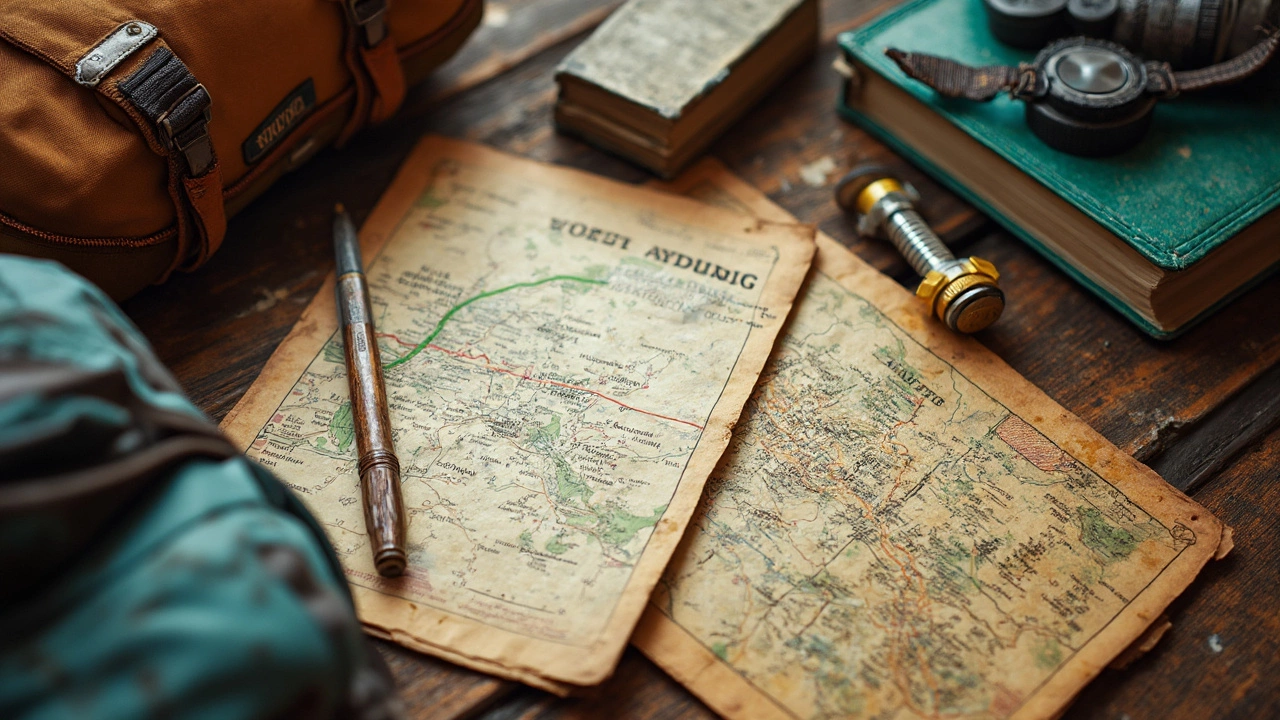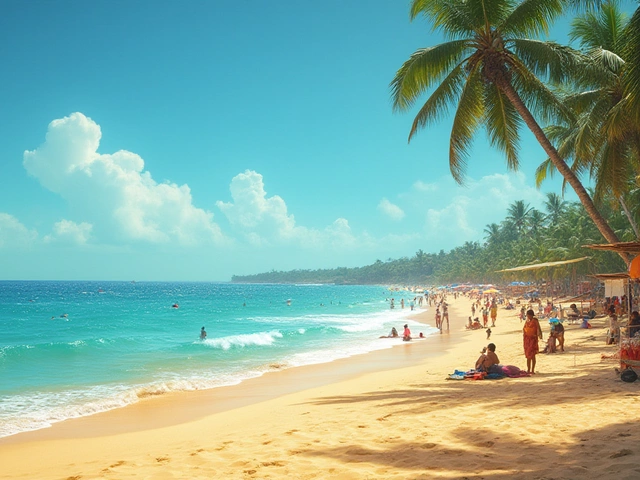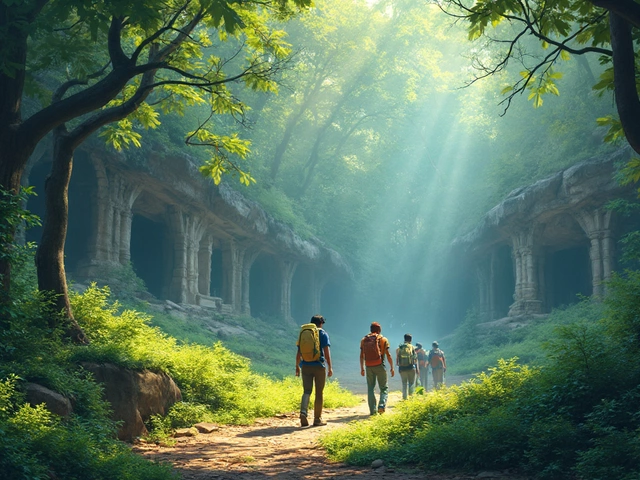If you’re daydreaming about trekking in India, you’ve probably wondered: do I really need a guide, or is that just something people say? You see advice all over the place, and everyone swears by different rules. The real answer? It depends—big time. Trekking in India is nothing like a walk in your local park, but it’s not always an episode of Man vs. Wild, either.
Some Indian treks snake through easy-going forests with clear paths. Others, especially in the Himalayas, can be wild, confusing, and totally unforgiving to someone who thinks Google Maps works everywhere. Plus, a few trails legally require you to have a registered guide and permit. Other places? You might feel more like you’re paying for company than real help.
You’ll also deal with language barriers, tricky weather, and rule changes that can pop up without warning. This isn’t a place to wing it if your safety net is “just ask someone.” But you also shouldn’t blow your budget hiring a guide if you actually don’t need one for your chosen trek.
- How Trekking in India Really Looks
- Do Indian Trails Legally Require a Guide?
- When Going Solo Makes Sense
- How a Guide Actually Helps (Or Doesn’t)
- Real Risks: Animals, Altitude, Authorities
- Money Talk: Guide Costs vs Going Independent
How Trekking in India Really Looks
Forget the pictures on Instagram for a second. Trekking in India comes with a ton of variety, and not all those scenic trails are built the same. In the north, you've got the famous Indian Himalayas trekking routes—places like Himachal Pradesh, Uttarakhand, Ladakh, and Sikkim. These aren't your regular hikes. The scenery can change from thick pine forests to boulder fields and glaciers, sometimes all in one day. Down south, treks like Western Ghats’ Kumara Parvatha or Kerala’s Munnar trails mean wild jungles, rolling hills, and humidity that hits hard.
Here’s the thing: distances can be deceiving. A 15-kilometer trail could take you the whole day if you’re climbing switchbacks or dealing with landslides. Maps don’t always match the reality on the ground either. You might find a trail washed out or rerouted with zero warning—locals often know about these changes before you ever see a post online.
Villages pop up even in high altitude spots. People will offer you chai (and expect a chat), but outside popular circuits, English isn’t a guarantee. On well-known routes like the Roopkund, Markha Valley, or Hampta Pass, you’ll see tea houses, makeshift camps, and sometimes surprisingly good paneer with rice. Get more remote, and you might be pitching your own tent and sharing space with wandering mules.
- Weather flips quickly. Afternoon thunderstorms or snow are normal, even in summer.
- Altitude is real. Even fit trekkers get headaches above 3,000 meters. Places like Stok Kangri or Kedarkantha aren’t a joke when it comes to acclimatization.
- Connectivity disappears fast. Don’t count on data or even calls once you’re a few hours out from the nearest road.
- Wildlife and livestock cross your path. You could see langurs, wild goats, or just as easily startled sheep herders on a shortcut.
| Region | Popular Treks | Altitude (m) | Best Season |
|---|---|---|---|
| Himachal Pradesh | Hampta Pass, Triund | 2,875–4,270 | June–September |
| Ladakh | Markha Valley, Chadar Trek | 3,200–4,900 | July–September |
| Uttarakhand | Roopkund, Valley of Flowers | 3,200–5,029 | May–October |
| Western Ghats | Kumara Parvatha, Kudremukh | 1,100–1,900 | October–March |
So yeah, trekking in India means you could be walking next to a glacier in the morning, sloshing through monsoon mud in the afternoon, and eating spicy food in a remote hut by night. The wild mix is what gets people hooked—but it’s also what bites those who come unprepared.
Do Indian Trails Legally Require a Guide?
This question trips up a lot of trekkers. The truth is, not every trekking India route makes it compulsory to bring a guide. But rules change based on the state, the region, and how close you are to international borders. Some places are super strict, while others barely care.
Let's get specific. In Sikkim, if you want to try famous treks like Goechala or Dzongri, you have to hire a registered local guide. No guide, no trek—it's that simple. The same goes for restricted border areas in Arunachal Pradesh, Ladakh, and some stretches of Uttarakhand. You’ll get checked at army posts, and without a guide’s name on your papers, they won't even let you start. Plus, these areas usually require special permits alongside the guide fee.
Here's a quick look at where guides are mandatory versus optional:
| Region | Mandatory Guide? | Any Extra Permits? |
|---|---|---|
| Sikkim (Goechala, Dzongri) | Yes | Yes |
| Arunachal Pradesh (Tawang, Mechuka, etc.) | Yes | Yes |
| Ladakh Restricted Areas | Yes | Yes |
| Himachal (Hampta Pass, Triund, etc.) | No | Not usually |
| Uttarakhand (Valley of Flowers, Roopkund) | Mostly No | Some permits |
| Kashmir (Great Lakes Trek) | No (but often recommended) | Permit required |
The main reason for these rules? Close borders, wildlife reserves, and remote geography where a trekking guide India really does keep you safer. The authorities don’t want trekkers to wander into restricted zones—or get lost and trigger rescue missions.
For the rest of India, especially classic treks in Himachal Pradesh and Uttarakhand, going solo is usually fine. You still have to register with local forest offices or police in the starting village, but nobody is forcing you to shell out for a guide.
Before you show up, always check the current rules online or with local trekking groups. These can change fast, especially after a bad weather event or incident. Permits and regulations in Indian Himalayas trekking regions can go from chill to strict in one season. So, don’t just assume last year’s blog post still applies!
When Going Solo Makes Sense
Trekking solo in India isn’t some high-stakes risk every time. For certain trekking India routes, going guide-free is totally doable, even for first-timers—if you know which trails fit the bill. Plenty of popular treks have clear trail markings, established camp sites, and enough fellow trekkers that you won’t ever feel alone, lost, or in over your head.
Let’s start with the most beginner-friendly trails. The Triund trek in Himachal Pradesh is basically the training ground for the Indian trekking scene. It’s short, gets crowded on weekends, and has tea stalls and small camps along the way. The Nag Tibba trek near Mussoorie is similar—marked paths, villages to ask for help, and a straightforward route. These sorts of places don’t require guides, permits, or even hardcore prep if you stick to the basics: good shoes, layered clothes, and a charged phone.
Another place where going solo is smart is if you already have experience hiking in similar conditions. Say you’ve done something like the Annapurna Base Camp trek in Nepal or have completed tough hikes in the Alps—then trails like Kedarkantha, Sandakphu, or Valley of Flowers will feel manageable. Indian trails that stay below 4,000 meters and have solid infrastructure rarely surprise anyone with sudden dangers (unless you wander way off the path, which, let’s be real, don’t do).
- If you speak Hindi or local dialects, you’re set up even better. Most locals you’ll meet are friendly, and knowing the language smooths things out a lot.
- Places with regular mobile coverage and towns every half-day of walking don’t really "need" a trekking guide India.
- Easy exit points along the routes means you can bail if weather shifts or you get tired—something you want to look for in solo treks.
A little trick: check YouTube and see if there’s a flood of vlogs about the trek. If there are, that usually means plenty of support and an easy-to-follow route.
You do want to double-check which treks legally require guides. As of early 2024, Sikkim, certain parts of Uttarakhand, and much of Arunachal Pradesh only let tourists enter with a registered guide. Ladakh’s Markha Valley and Chadar trek saw semi-regular rule shifts since COVID, so look up the latest info before you go. Most popular Himachal Pradesh trails don’t require guides, but cross-border treks or remote high passes often do—and local cops double-check permits often.
Here’s a quick side-by-side look at some solo-friendly treks versus ones where a guide is basically a must:
| Solo-Friendly Treks | Guide Required/Best With Guide |
|---|---|
| Triund (Himachal Pradesh) | Goechala (Sikkim) |
| Nag Tibba (Uttarakhand) | Chadar Frozen River (Ladakh) |
| Valley of Flowers (Uttarakhand) | Arunachal Pradesh High Passes |
| Kedarkantha (Uttarakhand) | Bara Bhangal (Himachal/Ladakh) |
So, if you pick your trek wisely, prep the basics, and don’t mind chatting with other trekkers or locals along the route, there’s no reason not to go solo. Just have your route, weather forecast, and little "what if" plan ready. Sometimes, you really don’t need a guide—just some common sense and a bit of research.

How a Guide Actually Helps (Or Doesn’t)
So, what exactly does hiring a trekking guide in India get you? In short, a lot more than just someone to walk ahead. But let’s cut through the hype.
First, on the tougher Himalayan trails, guides are basically walking insurance policies. They've done these routes dozens—sometimes hundreds—of times. They know which turn not to take when the fog rolls in, and they can spot weather changes that aren’t on your fancy phone app. If you’re on famous routes like the Chadar Trek or Roopkund, a trekking guide India can literally save your trip—or your life. The same goes for regions like Sikkim and Arunachal Pradesh, where guides are required by law and checkpoints will stop you without one.
What about when trails don’t legally require a guide? Here’s where things get fuzzy. Local guides can:
- Find shortcuts off the main road that only locals know about.
- Arrange home-stays with mountain families—for real dal-chawal, not instant noodles.
- Help if something goes wrong: sprains, altitude sickness, or lost gear.
- Deal with forest permits, often needed in protected zones or wildlife sanctuaries.
- Barter prices when you reach a mountain dhaba or need a taxi back down.
They’re also your best bet for understanding local culture and customs. Miss a festival celebration that you had no clue about? A good guide won’t let that happen.
BUT—as much as guides can be a blessing, they’re not always necessary. On popular South Indian trails (like Coorg or Western Ghats), the paths are usually marked, and there’s zero altitude risk. In tourist hotspots like Manali, you’ll see plenty of solo trekkers who didn’t spend extra on guidance. And sometimes, your guide just acts as a glorified porter or chats with friends on his phone the whole way—so it’s best to check for reviews before you book.
Check out this quick look at when a guide usually matters most for trekking in India:
| Trek Type | Guide Required by Law? | Worth Hiring Anyway? |
|---|---|---|
| Himalayan high altitude (e.g. Stok Kangri, Kedarkantha) | Sometimes | Yes |
| Sikkim, Arunachal, Nagaland | Always | Yes |
| Western Ghats (e.g. Kudremukh, Chembra) | No | Optional |
| Short, signed trails (e.g. Triund) | No | No |
If you go for a trekking guide India, make sure they’re registered and speak at least basic English or Hindi, unless you’re fluent in the local language. And ask direct questions: Have you done this route before? What's your backup plan for altitude sickness? Good guides have smart, clear answers—don’t accept anything less.
Real Risks: Animals, Altitude, Authorities
Forget what the glossy Instagram page shows—trekking India comes with some legit dangers that you need to think through before you lace up your boots. These aren’t just tips your mom would give; they’re the kind of real risks that can mess up your adventure fast if you’re not paying attention.
Wildlife isn’t just a background photo. In places like Uttarakhand and Himachal Pradesh, black bears, mountain goats, and even leopards roam the trails after dark. Most animals aren’t looking to pick a fight, but you should never leave your food outside or walk alone at dusk. Monkeys love human snacks, too—lock your bags and don’t leave anything shiny out. Even in popular spots like the Valley of Flowers, trekkers sometimes get bitten by stray dogs.
Altitude sickness is a real thing, especially above 3,000 meters. Don’t kid yourself—even folks in great shape have been hit by Acute Mountain Sickness (AMS) while trekking India. Signs like headaches, nausea, or sudden exhaustion mean it’s time to stop or head back down. Treks like Stok Kangri and Roopkund are notorious for sending people home early. For stats, check the typical numbers from the Indian Mountaineering Foundation:
| Altitude | Chance of AMS* |
|---|---|
| Below 2,500m | <10% |
| 2,500m-3,500m | 20-30% |
| Above 4,000m | 50%+ |
*AMS: Acute Mountain Sickness, based on Indian Himalayan trek reports 2023
Authorities and permits matter more than you think. Some states require police check-ins, Inner Line Permits, and guides by law. Sikkim, Arunachal Pradesh, and a few Ladakh trails won’t let foreigners in without official paperwork—sometimes even for locals. Getting caught without documents can end your trip, fast, and you might have a run-in with the army or forest rangers. Always double-check the latest entry rules for your area.
Here’s how to stay safe and not look clueless:
- Keep copies of permits and ID on you at all times
- Start early; never walk alone at dusk or in dense fog
- Follow local advice about wildlife sightings and weather changes
- Let someone know your route if trekking solo
- Don’t try to push through altitude sickness—ask a guide or local for help
Stay alert and use your head, and trekking India is epic. You just don’t want it to be epic for all the wrong reasons.
Money Talk: Guide Costs vs Going Independent
So what’s the real damage to your wallet if you hire a trekking guide in India? Let’s get practical. As of 2025, daily rates for local guides average between ₹1,200 to ₹2,500 (around $14-$30 USD) per day, depending on the region and trek difficulty. In busy areas like Manali or Leh, prices sometimes go higher, especially for English-speaking or certified guides. That doesn’t include extras like porters, cooks, or required government permits, which can stack on another ₹500-₹1,000 per day.
If you’re eyeing famous Indian Himalayas trekking routes—think Roopkund, Markha Valley, or Goechala—the costs can jump. Package treks advertised online often sit between ₹10,000-₹20,000 for 5-10 days, all-inclusive (guide, food, simple accommodation). And for super remote spots, you’ll need to pay for their travel or subsidize their food too.
On the flip side: going independent slashes the daily cost down to your basics—transport, food, and permits. Some trails, like Triund near McLeod Ganj or Sandakphu in West Bengal, can literally be done without a guide. People spend just ₹600-₹1,000 per day if they crash in budget guesthouses and eat local food. Your main hassle? No insider tips, translation help, or extra safety net.
Here’s how things roughly compare:
| Expense Type | With Guide (Daily) | Solo (Daily) |
|---|---|---|
| Guide Fees | ₹1,200–2,500 | ₹0 |
| Meals | Included / ₹300–500 | ₹300–500 |
| Accommodation | Included / ₹300–800 | ₹300–800 |
| Permits | Guide handles (fee varies) | Must arrange yourself (fee varies) |
Keep in mind: for some protected regions, a trekking guide India isn’t optional. The government bans solo trekkers to cut down rescue costs and boost safety. That’s the law in Sikkim, most of Uttarakhand’s reserve forests, and several Ladakh routes.
End of the day, you weigh up the risks, your comfort with Indian languages, navigating off-grid, and if your emergency plan is solid. If you’re all about budget and adventure, certain places let you trek solo easily. But if you want peace of mind, deeper cultural connections, or just not getting lost at 3,700 meters—shelling out extra for a guide often pays back big time.



